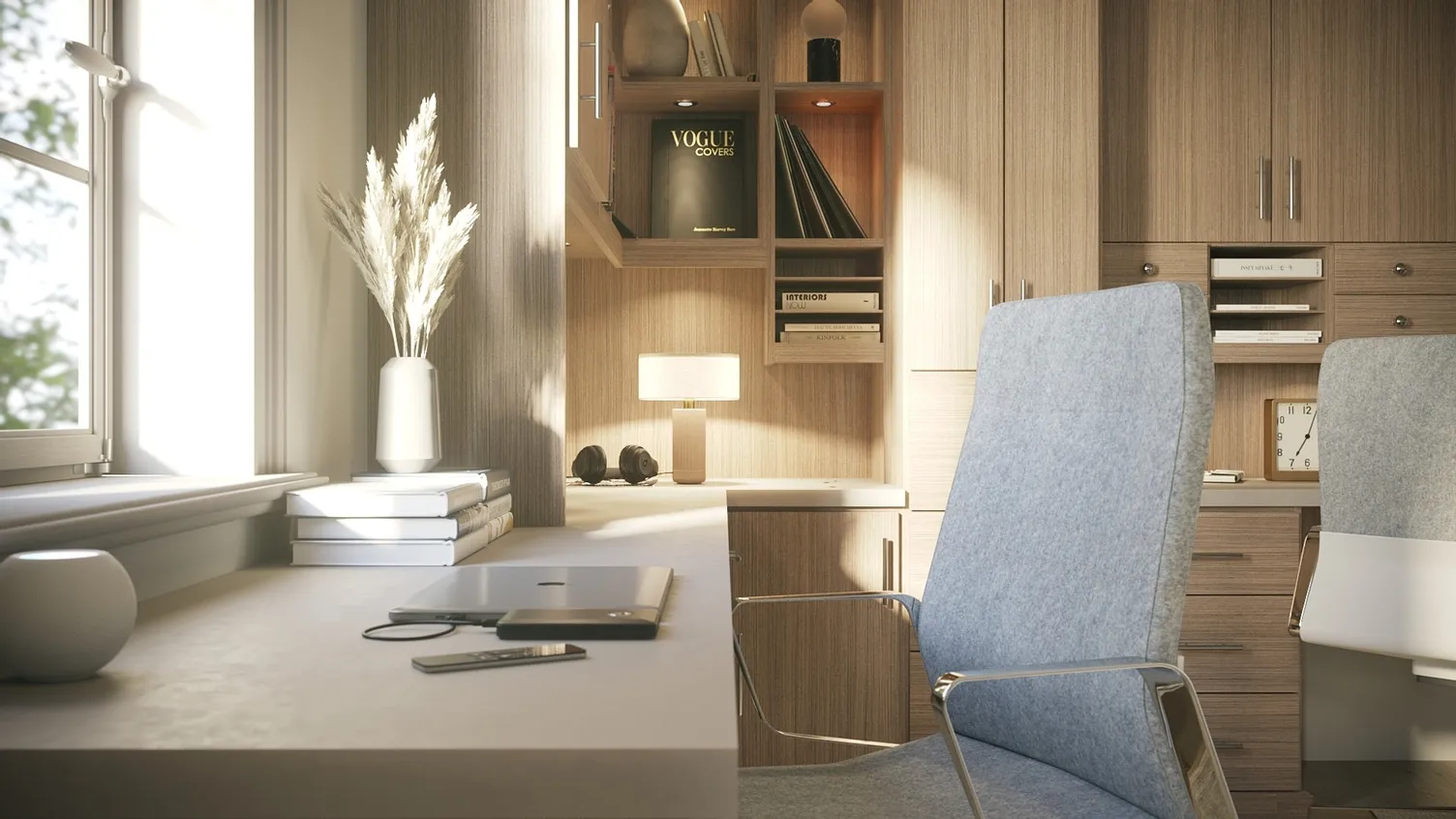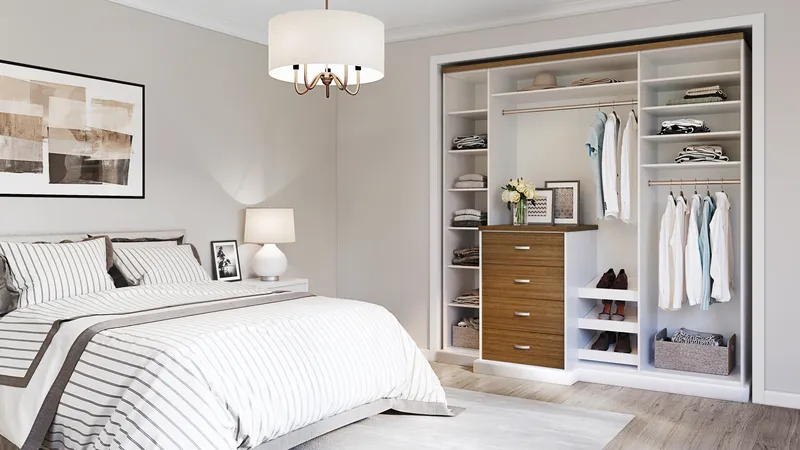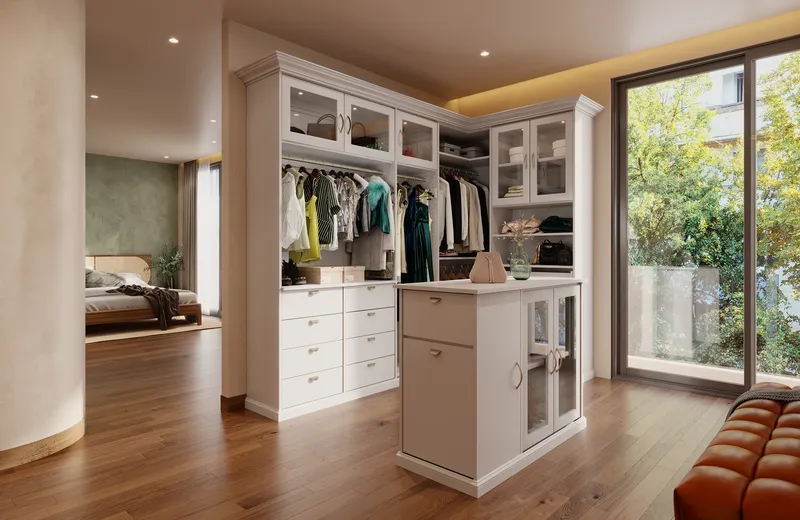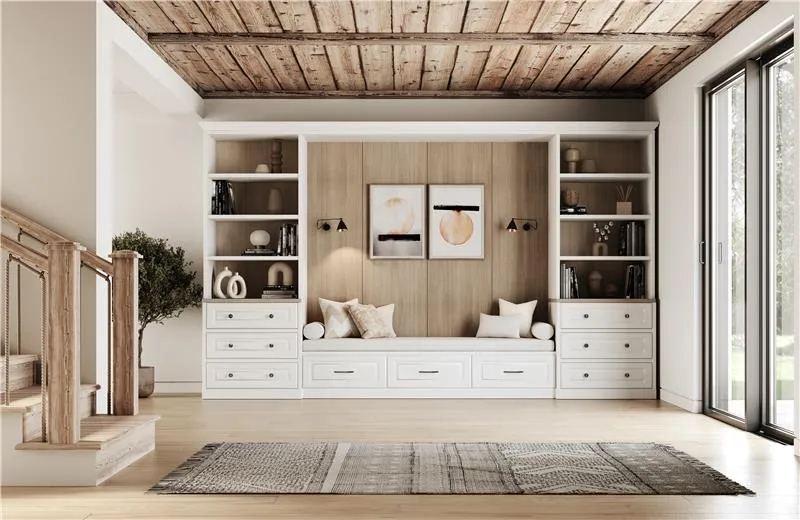A well-organized closet can make mornings smoother, reduce clutter, and help your child develop good habits that last a lifetime.
But how can you organize a kid's closet— properly? And how can you make sure it’ll never get cluttered again?
Let’s get your little one’s closet tidy and teach them how to keep their space clean and tidy!
How to Organize a Kid’s Closet
Declutter.
The foundation of any organized space is decluttering.
But when your kid is outgrowing clothes and losing interest in their toys quickly, you need to continue decluttering. The key to how to organize your kid's closet is to make sure you’re making more space for the things they enjoy and making it easier for them to find what they need. Here’s how to upkeep your decluttering process:
- Remove unused or outgrown items: Start by sorting through your child's closet and removing anything they haven't worn or used in the last six months to a year. Be sure to check for clothes that no longer fit or toys that are broken or missing parts.
- Donate or sell items in good condition: Teach your child the value of giving back! Encourage them to donate clothes and toys that are still in good condition to local charities or sell them at a yard sale or online. This not only clears space in their closet but also helps others in need.
- Involve your child in the process: It's important to involve your child in the decluttering process. This helps them understand the importance of organization and gives them a sense of ownership over their space. Let them decide which items they want to keep and which they're ready to part with. This can be a great opportunity for them to learn about decision-making and letting go of things they no longer need.

Create Zones.
Now that you've decluttered, you’ll want to organize your closet into zones.
This means physically dividing your space into specific areas designated for different types of items, like clothes, toys, and accessories.
Separating your closet into zones makes it worlds easier for you and your kid to find what they need and put things back in the right place.
Start by categorizing items into groups like clothing, shoes, toys, and accessories. Then, allocate a specific area in the closet for each category. One section can be for hanging clothes, another for folded clothes, a shelf for toys, and a bin for accessories.
For younger kids who may not be able to read yet, use pictures or color-coded labels to mark each zone. For example, use a picture of a shirt to label the clothing area or a toy icon for the toy section. You can also use colored bins or hangers to visually distinguish different zones, making it fun and easy for them to understand where everything goes!
Make Things Low to the Ground.
An essential, functional aspect of closet organization for kids is ensuring that frequently used items are within their reach.
This empowers your kid to independently access their belongings and encourages them to take responsibility for their own space! Here’s a little guide on how to keep things low without everything going on the floor:
- Keep everyday items like clothing, shoes, and toys on lower shelves or hanging rods. This allows children to easily see and reach their favorite items without needing help.
- Use lower shelves for everyday items. Place items that your child uses daily, such as school clothes and favorite toys, on lower shelves or at eye level. Reserve higher shelves for less frequently used items like seasonal clothing or special occasion outfits.
- Add adjustable storage solutions: As your child grows, their needs and the types of items they use will change. Installing adjustable shelving or rods allows you to adapt the closet's layout to accommodate their evolving needs. This way, you can keep frequently used items within their reach at every stage of their growth!
Maximize Vertical Space.
Every inch of space counts, especially if you’re working with a smaller kids’ closet.
To make the most of your available area, make sure to utilize the full height of the closet. This strategy allows you to store items that are not in daily use while keeping the lower, more accessible areas free for everyday essentials.

- Store seasonal or less-used items up high. Use the top shelves or the space near the ceiling to store seasonal clothing, holiday outfits, or items that your child has outgrown but you're not ready to part with yet. This keeps them out of the way but still accessible when needed.
- Add over-the-door organizers or hanging shelves. These are great for adding extra storage without taking up floor space. Use them to store accessories, small toys, or even shoes. Over-the-door organizers are particularly useful for items that your child uses regularly but don't need to be in the main part of the closet.
- Use clear bins or labeled boxes. For items stored on higher shelves, use clear bins or boxes with labels to keep everything organized and easily identifiable. This way, you can quickly see what's inside without having to pull everything down. It also makes it easier to keep the closet tidy since everything has a designated place.
Keep Heavier Items on the Floor and Lighter Items Up Top for Safety.
Safety should always be a top priority when organizing a kid's closet. We already talked about moving some items to the floor so your child can reach them, but properly placing items low can also prevent accidents. After all, your child’s closet should be as safe as the rest of their room.
Items like heavy books, large toys, or bulky shoes should be kept on lower shelves or directly on the floor. This reduces the risk of these items falling and injuring your child or causing damage.
Lighter items, such as stuffed animals, hats, or lightweight clothing, can be safely stored on higher shelves. Since these items are less likely to cause injury if they fall, they are better suited for the upper parts of the closet.
The Best Closet Organizers for Kids
It’s tough to maintain an organized closet for your kid if you don’t have the accessories to make it functional. Here are some of our top recommendations for closet organizer for kids:
Bins
Bins can be used to store toys, books, clothes, and more. They're great for keeping similar items together, making it easier for kids to find what they're looking for.
Since bins are typically clear, they’re great for visibility, allowing kids and parents to see what's inside without having to open them.
Adding bin labels helps kids know where things belong and makes it easier for them to put items away correctly. You can use written labels, picture labels, or a combination of both, especially for younger children who may not be able to read yet.
Drawers
Drawers are another essential organizer for a kid's closet, especially for storing smaller items like socks, underwear, and accessories.
To maximize the efficiency of drawers, consider using drawer dividers. These dividers can separate different types of items, such as socks from underwear, making it even easier for kids to find what they're looking for and keep their drawers tidy.
Note: When choosing drawers for a kid's closet, look for ones with safety stops! These prevent the drawers from being pulled out too far, reducing the risk of accidents or injuries.

Cubbies
Your kid doesn't just have to have cubbies at school— you can have ones in their closet, too!
Cubbies can be used to separate different types of clothing, such as pants, shirts, and sweaters, or to organize toys and books.
To enhance the appearance and functionality of cubbies even more, consider using fabric bins. These bins can slide in and out of cubbies easily, providing a tidy look and easy access to the contents.
Lower cubbies can be used for items that kids need to access frequently, while higher cubbies can be used for less frequently used items or storage of seasonal clothing.
Lockers
Lockers can also add a fun little twist to your closet while bringing the functionality of school back home! They're great for hanging jackets, backpacking backpacks, or storing sports equipment, keeping these bulky items organized and out of the way.
Utilize the inside of lockers by adding hooks for hanging jackets or bags, and consider adding shelves for additional storage space. This makes the locker a versatile storage solution, capable of accommodating a range of items.
For even more organization, you can use small bins or baskets inside lockers to store smaller items like hats, gloves, or sports accessories. This keeps everything tidy and easy to find.
Get the Perfect Custom Closet for Your Kid from Closet World!
Want to know how to organize your kid’s closet with the most flexibility? Our custom closet services will help you design and execute a custom kid's closet perfect for function and order. Schedule your free in-home consultation today!











